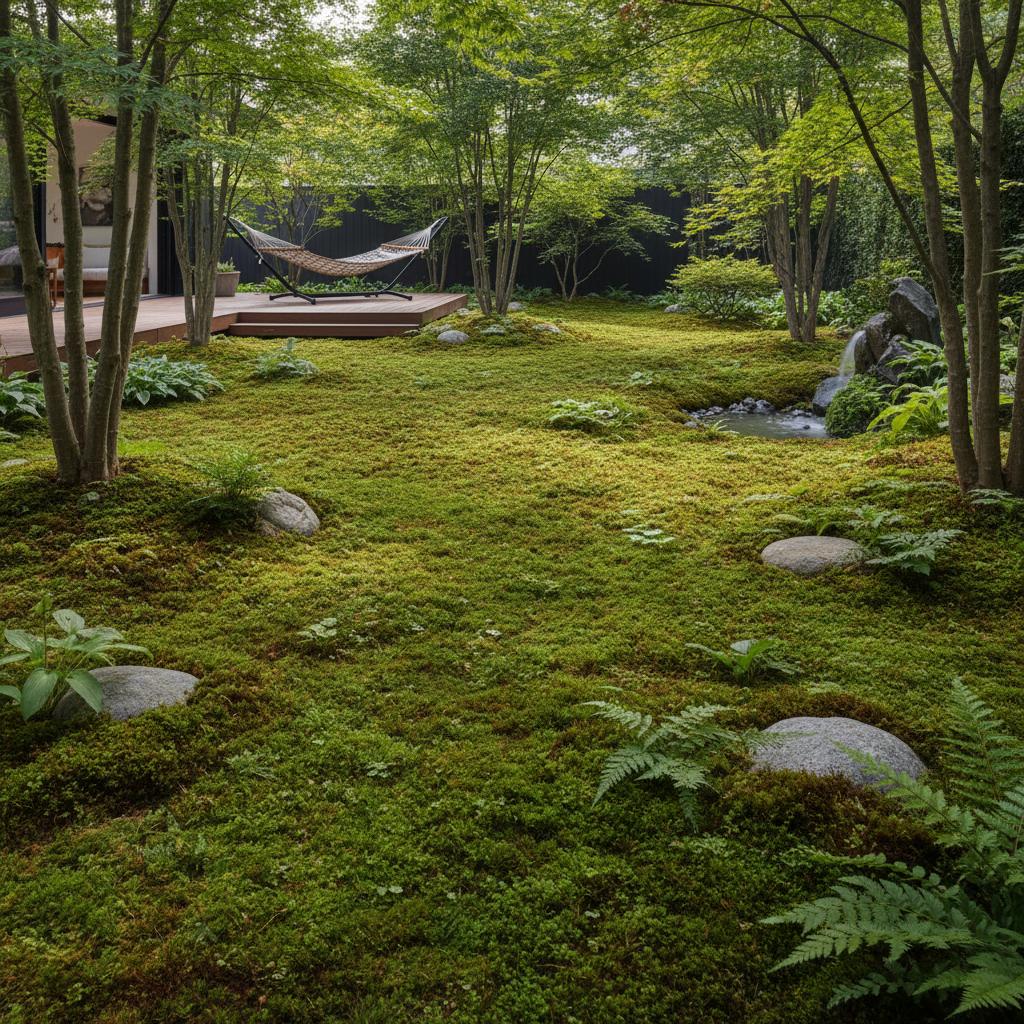Embrace Moss Lawns: 2025's No-Mow Paradise
Many homeowners view their lawns as sources of endless maintenance rather than enjoyment. The routine of mowing, watering, and fertilizing often overshadows the initial appeal of a green yard. Moss lawns present a compelling alternative, offering lush coverage with minimal effort and a serene aesthetic that enhances outdoor spaces.
These natural ground covers thrive in conditions where traditional grass struggles, such as shaded or moist areas. Homeowners increasingly choose moss for its sustainability and low demands, transforming yards into tranquil retreats. This guide explores how to evaluate suitability, establish growth, maintain vitality, and appreciate the broader environmental advantages.
Assessing Your Space
Evaluate your yard's conditions to determine if moss will flourish. Moss adapts to various environments but performs best in specific settings. Begin by mapping out potential areas for transplantation or encouragement of natural growth.
Identify Shaded Areas
Moss requires partial to full shade, ideally receiving no more than two to four hours of direct sunlight daily. Examine spots under large trees, along north-facing walls, or beneath eaves where sunlight filters softly. These locations retain humidity, creating an ideal microclimate; test by observing if the soil remains consistently damp without irrigation.
Check Soil and Drainage
Moss favors slightly acidic soil with a pH between 5.0 and 6.0, along with compacted texture that retains moisture. Acquire a soil testing kit from a local nursery to measure pH levels accurately. Ensure moderate drainage to prevent waterlogging; moss tolerates dampness but benefits from soil that does not become fully saturated during heavy rains.
Notice Existing Moss
Survey your property for spontaneous moss patches, which indicate favorable conditions like consistent moisture and low light. These serve as starting points for expansion; collect samples from healthy areas to propagate elsewhere. Document locations to prioritize development in similar microhabitats.
Encouraging Growth
Establishing moss involves deliberate steps to promote adhesion and spread. Select moss types suited to your region, such as Sphagnum for moist sites or Leucobryum for drier shades. Transplant in early spring or fall when temperatures remain cool.
Keep It Moist
Provide consistent surface moisture during the initial establishment phase, applying a fine mist from a garden hose or spray bottle once or twice daily. Aim for dampness similar to a wrung-out sponge; overwatering leads to rot, while dryness hinders rooting. Reduce frequency after two to four weeks as the moss secures itself to the soil.
Limit Foot Traffic at First
Protect new transplants by marking off the area with temporary barriers like string or stakes for the first month. This allows rhizoids to anchor firmly without disturbance. Once established, the moss withstands light foot traffic, such as barefoot paths, but avoids heavy use to preserve its cushion-like texture.
Watch for Debris
Regularly clear fallen leaves, acorns, or pine needles that smother the moss and promote fungal issues. Use a soft-bristled broom or gloved hands to gently remove accumulations every few days initially, then weekly. This practice ensures adequate airflow and prevents decay, supporting healthy expansion.
Caring for Your Moss Over Time
Moss lawns demand far less intervention than grass, focusing on observation and minimal adjustments. Develop a seasonal routine to sustain its vibrancy without disrupting natural processes.
Gentle Cleaning
Sweep the surface lightly every two to four weeks using a bamboo rake or soft brush to remove organic debris. Perform this task on dry days to avoid compacting the moss. Such maintenance preserves the plant's structure and encourages even growth across the area.
Occasional Hydration
In arid regions or during prolonged dry spells, supplement rainfall with a gentle misting every seven to ten days. Monitor for signs of dormancy, such as browning, and revive with hydration; moss rebounds quickly upon re-wetting. Established patches often rely solely on ambient moisture, conserving resources effectively.
Weed Control
Address invasive plants promptly by hand-pulling them when the soil is soft after rain, ensuring complete root removal. Moss's dense mat naturally suppresses competitors over time; apply a thin layer of buttermilk slurry to bare spots if weeds persist, as it fosters moss spore germination. Avoid chemical herbicides to maintain the ecosystem's integrity.
Light Adjustments
Monitor surrounding vegetation annually; prune overhanging branches by one-third if they deepen shade excessively, allowing filtered light to reach the moss. For sun-exposed edges, introduce companion plants like ferns or install permeable shade cloth temporarily. These tweaks balance exposure and prevent stress-induced decline.
Environmental Benefits
Moss lawns contribute positively to ecological health, aligning with sustainable landscaping trends. Their unassuming presence yields significant advantages for both local habitats and global concerns.
No Chemical Runoff
Eliminate fertilizers and pesticides entirely, preventing pollutants from seeping into groundwater or nearby streams. This approach protects aquatic life and soil microbes, fostering a resilient yard ecosystem. Communities benefit from reduced contamination risks associated with traditional lawn care.
Water Conservation
Moss uses up to 80 percent less water than turf grass, thriving on natural precipitation once rooted. In water-restricted areas, this choice supports conservation efforts without compromising visual appeal. The result is a verdant landscape that aligns with drought-tolerant gardening principles.
Carbon Neutral Growth
Forego gas-powered mowers, slashing emissions from yard maintenance by nearly 100 percent for that space. Moss actively sequesters carbon dioxide through photosynthesis, enhancing air quality subtly. Over time, a mature moss lawn offsets more environmental impact than it generates.
Integrating Moss into Your Landscape
A thriving moss lawn evolves your outdoor area into a harmonious, low-effort feature. Observe seasonal changes, such as intensified green after rains or subtle textural shifts in winter. Pair it with stone paths or native perennials to create inviting nooks that encourage relaxation and appreciation of natural rhythms.



